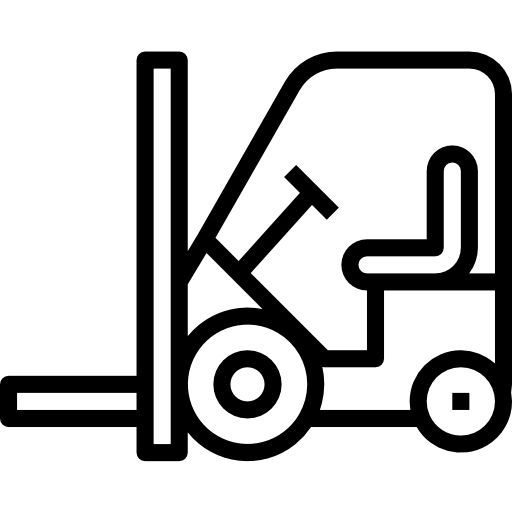Blog
Hoist HANDLING Terminology
Lifting capacity: the lifting capacity of a forklift refers to the maximum weight that can be lifted when the distance from the centre of gravity of the goods to the front of the fork is not greater than the distance between the loads. If the centre of gravity of the load on the fork exceeds the distance from the specified load centre, the lifting capacity should be reduced accordingly due to the limitation of the longitudinal stability of the lift.
Centre of Gravity Distance: The centre of gravity distance refers to the horizontal distance, expressed in millimetres, from the centre of gravity to the front wall of the vertical part of the fork when a standard load is placed on the fork. For a 1t forklift, the distance from the centre of the load is 500 mm.
Maximum lifting height: The maximum lift height refers to the vertical distance between the upper surface of the horizontal part of the fork and the ground when the forklift is fully loaded and the goods are lifted to their highest position on level and firm ground.
The angle of inclination of the mast refers to the maximum angle of inclination of the mast forwards or backwards in relation to the vertical when the unladen lift is on a flat and firm surface. The function of the forward slope is to facilitate picking up the fork and unloading the goods; the function of the rearward slope is to prevent the goods from slipping off the fork when the lift truck is moving with the goods.
Maximum lifting speed: The maximum lifting speed of a lift truck usually refers to the maximum speed at which goods are lifted when the truck is fully loaded, expressed in m/min. Increasing the maximum lifting speed can improve the efficiency of the operation; however, if the lifting speed exceeds the limit, accidents involving cargo damage and machine damage are likely. Currently, the maximum lifting speed of domestic forklifts has been increased to 20m/min.
Maximum speed: increasing the speed has a major impact on improving the lift’s efficiency. Internal combustion engine driven forklifts with a lifting capacity of 1t must travel at a maximum speed of not less than 17m/min at full load.
Minimum turning radius: when the forklift is operating at low speed without load and turning in full roll, the minimum distance between the outside and inside of the body to the centre of rotation is called the outside minimum outside turning radius Rmin and the inside minimum inside turning radius rmin respectively. The smaller the minimum outer turning radius, the smaller the ground area required to turn the lift and the better the manoeuvrability.
Minimum ground clearance: minimum ground clearance refers to the distance from the lowest fixed point of the vehicle chassis to the ground, excluding the wheels, and indicates the ability of the lift to negotiate raised obstacles on the ground without collision. The higher the minimum clearance, the higher the lift’s throughput.
Axle spacing: the axle spacing of a forklift truck refers to the horizontal distance between the centre lines of the front and rear axles of the truck. Wheelbase refers to the distance between the left and right wheel centres on the same axle. Increasing the axle spacing is beneficial for the longitudinal stability of the lift, but it increases the length of the body and the minimum radius of rake. Increasing the axle spacing is beneficial for the lateral stability of the lift, but increases the overall width of the body and the minimum thigh radius.
Minimum width of the right-angle gangway: the minimum width of the right-angle gangway refers to the minimum width of the gangway that crosses under the right angle to allow the lift to move back and forth. For example. In general, the smaller the minimum width of the right-angle channel, the better the performance.
Minimum width of the stacking gangway: the minimum width of the stacking gangway is the minimum width of the aisle when the lift is in normal operation.





